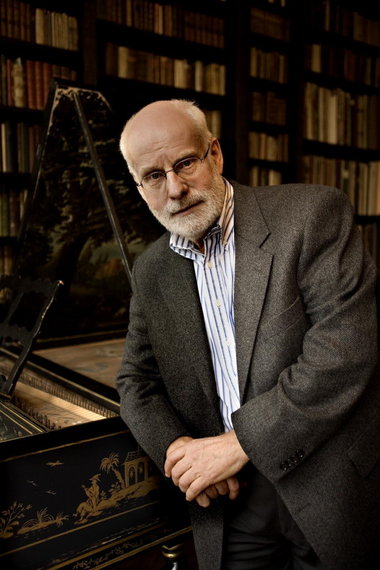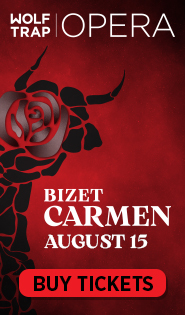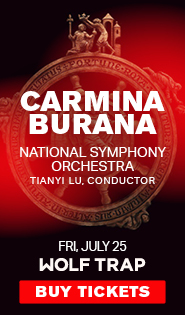Koopman returns to NSO bearing rare and rewarding Baroque gifts

Ton Koopman conducted the National Symphony Orchestra Thursday night at the Kennedy Center.
Regular podium visits by early music specialists are helping to mold the baroque and classical playing of the National Symphony Orchestra. Ton Koopman returned to the Kennedy Center Concert Hall on Thursday night, with a more eclectic and delightful program than the one he led in 2017. The Dutch conductor pared down the string section even more this time, to about two-score players, which yielded clean balances and impeccable unity of articulation.
The first half consisted entirely of pieces that the NSO had never played before. Opening the evening was Jean-Féry Rebel’s “Le Chaos,” a depiction of the state of the universe before Creation from his programmatic symphony Les élémens. The composer’s use of an amassed cluster of dissonance may have led some listeners to think they had mistakenly walked into a contemporary music program. With the strings playing mostly without vibrato, the complex harmonies bristled, as strident chords hammered over softer lines.
A suite of dances from Rameau’s Les Indes Galantes began with the Overture, crisply defined especially in the fast section. The “Orage” and “Air de Borée” seemed to revisit Rebel’s universal chaos, with buzzing lightning strikes in the violins and a clashing chord struck on the harpsichord. Folk elements came to the fore in the “Musette,” with homespun drones that comically sagged flat like a bagpipe as the musicians “ran out of air” at the end.
The “Tambourins,” evoking folk-style drums, raced to its ending with exuberance, and the “Rigaudons” tripped along vivaciously. One should not excerpt the music of this decidedly silly opera-ballet without the “Rondeau” that concluded this suite, also known as the “Air des sauvages” with its sung parts. The music’s infectious rhythmic energy made it a delight to hear again as an encore at the end of the evening.
C.P.E. Bach’s compact Symphony in G Major, Wq. 183/4, provided a crackerjack conclusion to the first half, bridging the gap between baroque and classical. The first movement was light, airy, and fast, moving without a break into the symphony’s best section, a plangent Poco andante of strong emotional contrasts. Principal horn player Abel Pereira skilfully negotiated the high horn writing, including in the playful third movement, given florid phrase shapes by Koopman.
While C.P.E. Bach was writing that symphony in Hamburg, the young Mozart composed his Serenata notturna in Salzburg. Koopman featured four principal string players in the solo group, arranged around the podium, as well as the timpani, for which Mozart rather unusually included a solo part in this string serenade. Koopman’s sculpting of dynamics brought the latter part into relief in striking ways in the first movement. The Menuetto was spritely, with concertmaster Nurit Bar-Josef radiant and feather-light in the soloists-only Trio.
Koopman did something utterly charming with the third movement of this piece, having the soloists add bravura cadenzas at the pauses before each return of the main theme. These pauses are marked tellingly with fermatas over rests in the score, but Mozart did not write out or even suggest music for these moments of silence.
Starting with Bar-Josef and then followed by principal second violinist Marissa Regni, principal violist Daniel Foster, and principal double-bassist Robert Oppelt, each contributed a humorous flight of fancy, the last with a whimsical interpolation of the tune “Twinkle, twinkle, little star.” Then timpanist Jauvon Gilliam got in on the act, and for the final cadenza, when none of the soloists could be convinced by the pleading Koopman to play something, the entire cello section ad-libbed one with considerable enthusiasm.
Koopman ended this orchestral workout with some aerobic Haydn, the Symphony No. 83 (“The Hen”). The violins leaned comically on the “wrong-note” grace notes of the clucking theme in the first movement that earned the piece its nickname, answered by a chirping dotted-note pattern in the oboe. Koopman made the most of the work’s other jokes, too, like the repeated notes on which the second violins and violas seems to get stuck, getting softer and softer until the whole orchestra crashes back into the texture. Throughout the piece the NSO responded to Koopman’s demands with vigor and clarity.
The program will be repeated 11:30 a.m. Friday and 8 p.m. Saturday. kennedy-center.org; 202-467-4600



Posted Mar 16, 2019 at 12:21 am by Charlie Rutan
Just FYI: we have baroque musette players in the US- 4 on the east coast, one central, and two on the west.